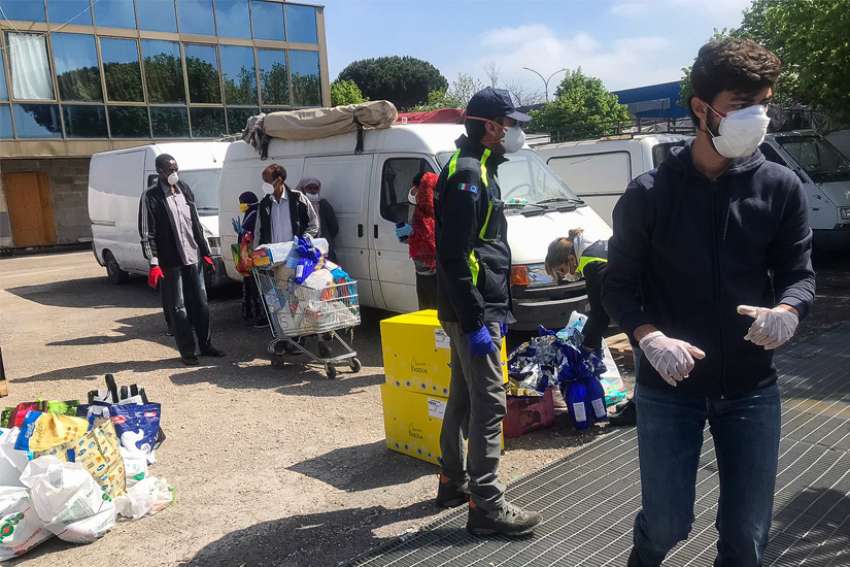Between 500 and 800 people, including children, are thought to be living in the nine-story building, which has served since 2006 as a makeshift shelter for people with official refugee status or international protection permits.
The building, dubbed Selam Palace, became the first "red zone" in Rome in early April, which led authorities to set up checkpoints staffed by the military, as well as patrols and fencing to prevent people from entering or leaving the area. Only authorized volunteers and officials are allowed access.
"Cittadini del Mondo," the volunteer association that has been assisting the refugees since 2006, warned local government and health officials in early March of a potential outbreak since residences with large numbers of inhabitants and crowded conditions place them at a higher risk of contagion.
Because the building was constructed for university offices and not as a residence, occupants jerry-built needed cooking and sanitation facilities, but the association reported in 2018 that there was only one toilet for every 19 people and one shower for every 33 people.
Soon after two occupants tested positive for the virus, the area was cordoned off by the army April 6 and local health authorities set up temporary onsite testing April 8-16. At least 50 people tested positive and were taken to hospitals, if they needed medical care, or hotel rooms or other facilities for quarantine, Monica Luzzi, the city council president, told Al Jazeera April 18.
Donatella D'Angelo, a family physician and president of "Cittadini del Mondo" ("Citizens of the World"), told the news agency, "I've been repeating for years that people cannot live in these conditions. It was crystal clear that this was going to happen."
The organization told Al Jazeera it was concerned the halt in testing at the site would mean newly developed cases would go undetected and the impossibility of social distancing in the crowded building would bring a fresh outbreak.
The papal almoner, Cardinal Konrad Krajewski, had visited Selam Palace April 4, before the army lockdown, bringing face masks, disposable gloves, thermometers, hand sanitizer, bleach and other cleaning supplies as well as drinking water, food and fresh milk from dairy cows on the papal farm in Castel Gandolfo.
The local volunteer group said it has been working with the civil protection authorities to continue assisting the residents. The group provides social, legal, health care and educational services.
Since the occupants have been blockaded inside the building and can no longer work or get provisions, the group has organized collection drives for food and other necessities. Because of restricted contact with residents, the volunteers were also providing online educational support for children, according to its website.
The building, named "selam," means "peace" in Ethiopia's Amharic language, houses internationally protected people from Eritrea, Ethiopia, Somalia and Sudan. The city made the building temporarily available to refugees after hundreds were expelled in 2006 from another structure. The city said it would make other locations available to the refugees, but because the city refused to allow them to visit the new sites, they refused to move. According to "Cittadini del Mondo," the city stopped trying to alleviate the situation in 2007.


